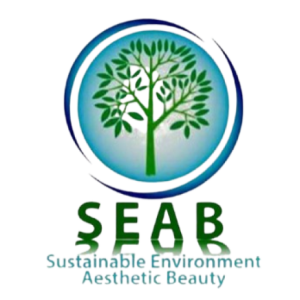
International Mother Earth Day: Rebuilding Our Relationship with Nature
April 22nd marks International Mother Earth Day, a United Nations-recognized observance that goes beyond traditional Earth Day celebrations to emphasize humanity’s responsibility to rebuild our troubled relationship with the natural world. While both observances share the same date, International Mother Earth Day specifically embraces the concept of “Mother Earth” as a common expression for the planet among many cultures, recognizing the interdependence that exists between humans, other living species, and the planet we all inhabit.
Origins and Evolution
The United Nations General Assembly established International Mother Earth Day in 2009, building upon the momentum of the original Earth Day that began in 1970. The concept of “Mother Earth” reflects indigenous perspectives from around the world that view our planet as a nurturing maternal entity deserving of respect and protection.
The resolution establishing this day acknowledges that Earth and its ecosystems provide humanity with life and sustenance. It emphasizes our collective responsibility to promote harmony with nature and the Earth to achieve a just balance among the economic, social, and environmental needs of present and future generations.
The Meaning Behind “Mother Earth”
The term “Mother Earth” carries profound cultural significance across civilizations. From the Andean “Pachamama” to various indigenous traditions worldwide, the concept represents the planet as a living system that nurtures and sustains all life forms. This perspective contrasts with industrial views that often treat nature as merely a resource to be exploited.
By embracing this terminology, the United Nations sought to incorporate traditional knowledge and cultural perspectives into global environmental discourse. This inclusive approach recognizes that indigenous communities have long maintained sustainable relationships with their environments based on principles of reciprocity and respect.
Rebuilding Our Relationship with Nature
At its core, International Mother Earth Day focuses on the urgent need to repair humanity’s damaged relationship with the natural world. This relationship has deteriorated through centuries of exploitation, pollution, and unsustainable development patterns that have pushed planetary boundaries to their limits.
Key aspects of rebuilding this relationship include:
Sustainable Development
Moving beyond extractive economic models toward truly sustainable development remains a central challenge. This involves decoupling economic growth from environmental degradation through circular economy principles, renewable energy transition, and sustainable production and consumption patterns.
Biodiversity Protection
The accelerating loss of species and habitats represents a breakdown in Earth’s living systems. International Mother Earth Day emphasizes the importance of protecting biodiversity not just for ecological health but as a matter of ethical responsibility toward other species that share our planet.
Climate Action
Climate change represents perhaps the most severe symptom of our damaged relationship with Earth. Addressing this crisis requires both mitigation (reducing emissions) and adaptation (preparing for unavoidable changes), all while ensuring just transitions for affected communities.
Rights of Nature
An emerging framework gaining recognition involves granting legal rights to natural entities. Several countries have recognized rights of nature in their legal systems, reflecting a profound shift in how humans relate to the natural world—from one of ownership to one of partnership.
Global Mobilization and Local Action
Each year, International Mother Earth Day serves as a focal point for environmental mobilization worldwide. While global coordination is essential for addressing planetary challenges, the day particularly emphasizes local and individual actions that collectively create meaningful change.
Communities around the world mark the day through tree planting initiatives, cleanup campaigns, educational workshops, and advocacy efforts. These activities help forge direct connections between people and their local environments, rebuilding relationship with nature through hands-on engagement.
Beyond Symbolism: Creating Lasting Change
Critics sometimes question whether designated observance days create meaningful impact beyond symbolic gestures. However, International Mother Earth Day has demonstrated its value as both a consciousness-raising tool and a platform for announcing substantive environmental commitments.
The 2016 Paris Climate Agreement was symbolically chosen to be signed on International Mother Earth Day, connecting this global framework to the day’s meaning. Similarly, organizations and governments often time major environmental policy announcements to coincide with the observance, leveraging its visibility.
Looking Forward
As we face interconnected environmental crises, International Mother Earth Day reminds us that our relationship with nature requires fundamental reconsideration. Rather than viewing natural systems as resources to be managed, the day invites us to recognize Earth as a living community to which we belong.
This shift in perspective—from dominion over nature to partnership with it—represents the deeper purpose of International Mother Earth Day. By acknowledging our dependence on Earth’s systems and our responsibility to maintain them, we begin the essential work of rebuilding our relationship with the only planet we call home.
Whether through personal choices, community initiatives, or advocacy for systemic change, participation in International Mother Earth Day offers everyone an opportunity to contribute to this vital relationship-building process. As we face unprecedented environmental challenges, recommitting to our relationship with Mother Earth has never been more urgent or more necessary.
Event Details
Register Now
Error: Contact form not found.

